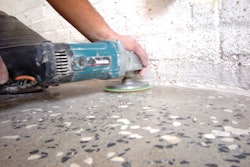
By Pete Schermerhorn, President and CEO, Triax Technologies
Technology continues to gain momentum in the construction industry. Over the last 18 months, a “perfect storm” of internal and external factors — driven by a boom in construction activity, population demands and a lack of skilled labor — has spurred contractors to begin adopting construction technologies.
Eighty percent of construction contractors are having difficulty filling hourly craft labor positions, which make up the bulk of the industry’s workforce, and nearly the same percentage believe it will continue to be hard — or only get harder. This affects project costs, timelines and overall safety as construction firms have to increase base pay rates, lengthen schedules and hire from a limited labor pool without the ability to test their skills. At the same time, construction activity continues to increase, with the USG Corporation + U.S. Chamber of Commerce Commercial Construction Index (CCI) reporting the highest levels of backlog since the survey’s inception.
As construction companies learn to do business with fewer resources, they are adopting new digital solutions to enhance visibility, unlock efficiencies and build safer and smarter than ever before.
And, the market has responded with record outside investment in construction technology firms, including $1.38 billion in 2018 alone. This has accelerated the development of innovative technologies that connect the jobsite through Internet of Things (IoT) solutions, including wearable devices, sensors and drones. While software still requires some degree of manual entry, IoT solutions automatically collect data from sensors worn on workers, tagged onto equipment and tools, or placed around the jobsite to monitor environmental or site conditions.
Yet, as 2019 approaches, and solutions become more sophisticated, the mere presence of technology on site does not guarantee a competitive advantage. Technology is only as good as the people and processes that support it, and below are some tips for getting started and seizing opportunity in today’s market.
1. Start with a problem
While it seems like common sense, it’s essential to start with a defined business problem or issue that can’t be solved by existing, manual methods. Technology for technology’s sake isn’t just a waste of resources but can result in end-user fatigue and frustration. When a solution is adopted and then quickly discarded or forgotten, employees at the jobsite begin to discount future initiatives.
To that point, it’s essential to include different departments and functions in the problem identification and technology evaluation process, especially the people at the core of the solution who will ensure its day-to-day use and optimization. What one role may think is a pressing need may be seen differently by other members of the project team. Consider what “success” will look like for each stakeholder: is it streamlining processes, enhancing safety, or improving reporting and communication? Thinking through the on-boarding, training and daily administrative processes sets your organization up for success.
2. Determine the best solution
As contractors become more familiar with construction technology, and the number of solutions grows, pay attention to quality over quantity. With limited resources, companies can’t afford to spend on solutions that aren’t built for the jobsite.
If you’re willing to invest in construction technologies, you should be willing to invest in up-front research and education. Who else has adopted a solution and why? Is it for its technology innovation (non-GPS or superior battery life, for example), its initial training and on-going support, or its ability to integrate with existing construction hardware or software?
3. Let data drive your decisions
The benefit of IoT technology is that it shifts the focus from lagging indicators/historical look-backs to real-time management and decision-making. For example, wearable safety technology can automatically detect worker falls and notify safety leaders on site, significantly reducing the time it takes to respond to an incident. For workers, new wearable devices enable increased peace of mind on site and other material safety benefits, such as the ability to report site hazards from anywhere on site, without language barriers.
As another example, drones can document real-time site conditions to identify hazards such as loose roofing, an unstable pillar, or too shallow excavations. Whereas the old way was to have safety leaders walk around a jobsite and manually identify issues, IoT solutions like wearables and drones can detect and recognize potential incidents or hazards as they occur and regardless of where the supervisor is located.
In addition, with data to quantify worker movements and asset utilization on site, project leaders can identify actual sources of waste and better manage resources. For example, instead of having a piece of equipment sit idle on site (or on the flipside, overworked, leading to unnecessary wear-and-tear), contractors can reallocate resources.
Just as a sound structure begins with a strong and well-designed foundation, the adoption of construction technologies requires strategic planning and support. By identifying the problems you hope to solve through technology, gaining stakeholder buy-in and letting data drive your decisions, you can create a connected jobsite that improves safety, efficiency and productivity for your firm.


















